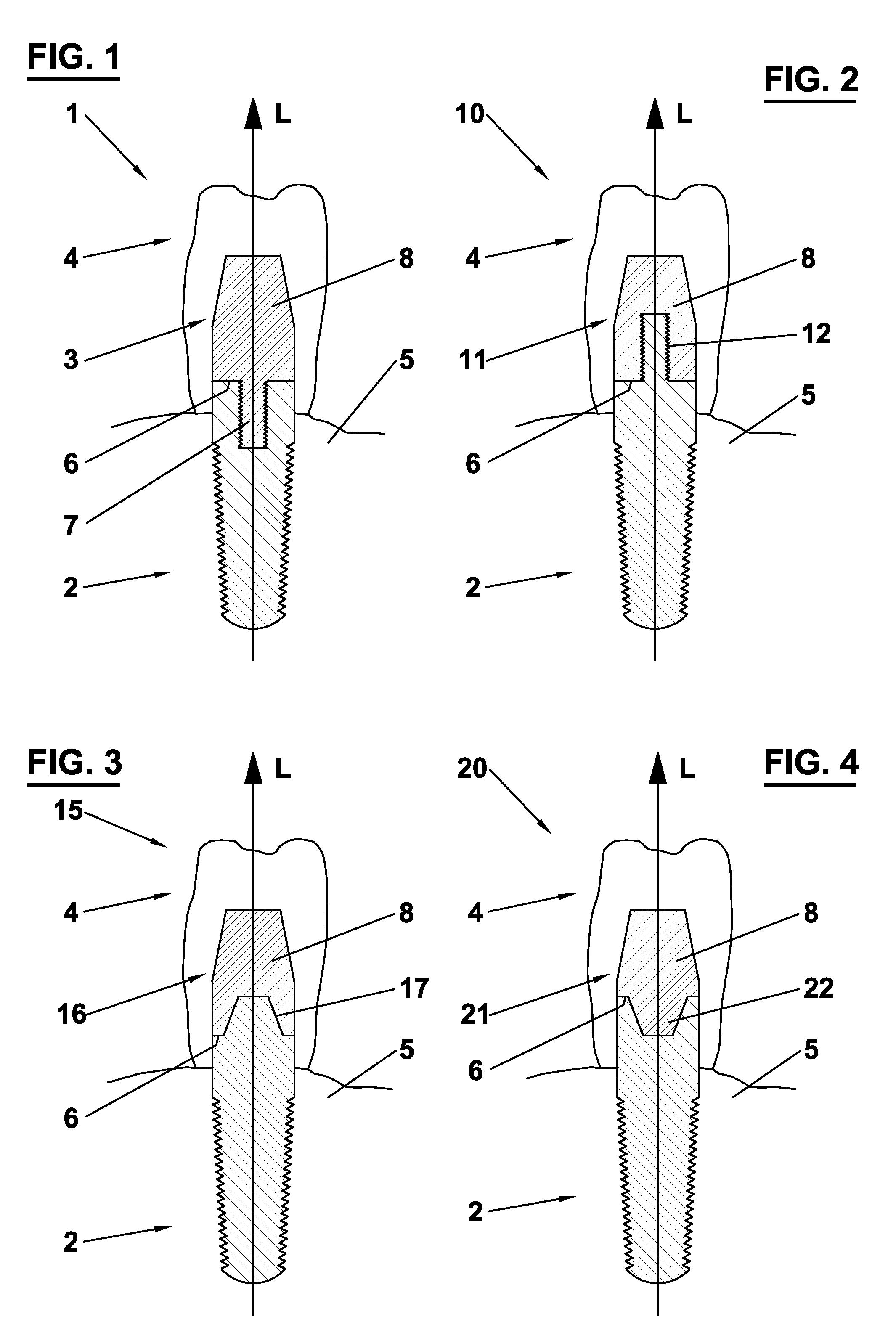Abutment for a dental implant
a technology for dental implants and abutments, applied in the field of abutments, can solve the problems of increased bruxism, insufficient absorbing of masticatory stress on the structure of artificial teeth, and material disadvantages of being too stiff and brittle, so as to reduce the danger of structural weakening of the abutment, improve mechanical retention, and improve the effect of retention
- Summary
- Abstract
- Description
- Claims
- Application Information
AI Technical Summary
Benefits of technology
Problems solved by technology
Method used
Image
Examples
Embodiment Construction
[0029]FIG. 1 depicts an artificial tooth structure 1 comprising a dental implant 2, an abutment 3 and a dental prosthesis 4. The dental implant 2 is anchored into a jaw bone 5 and consists, for instance, of titanium, stainless steel, ceramics or another osseointegratable material.
[0030]The abutment 3 is arranged on the dental implant 2 in such a way that the abutment 3 has a contact surface 6 at its apical end with the coronal side of the implant 2. The abutment 3 is rigidly connected to the implant 2 by means of a connector portion 7 protruding from the center of the contact surface 6. The connector portion 7 is cylindrically shaped and has an outer thread that is engaged with an inner thread of a receiving bore in the implant 2.
[0031]The abutment 3 further comprises a body portion 8 which constitutes a prolongation of the implant 2 in a coronal direction along the longitudinal axis L. At the surface of the body portion 8 the dental prosthesis 4 is attached.
[0032]The abutment 3 is ...
PUM
 Login to View More
Login to View More Abstract
Description
Claims
Application Information
 Login to View More
Login to View More - R&D
- Intellectual Property
- Life Sciences
- Materials
- Tech Scout
- Unparalleled Data Quality
- Higher Quality Content
- 60% Fewer Hallucinations
Browse by: Latest US Patents, China's latest patents, Technical Efficacy Thesaurus, Application Domain, Technology Topic, Popular Technical Reports.
© 2025 PatSnap. All rights reserved.Legal|Privacy policy|Modern Slavery Act Transparency Statement|Sitemap|About US| Contact US: help@patsnap.com



